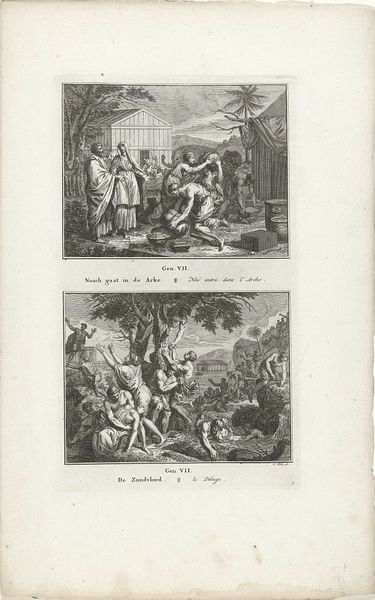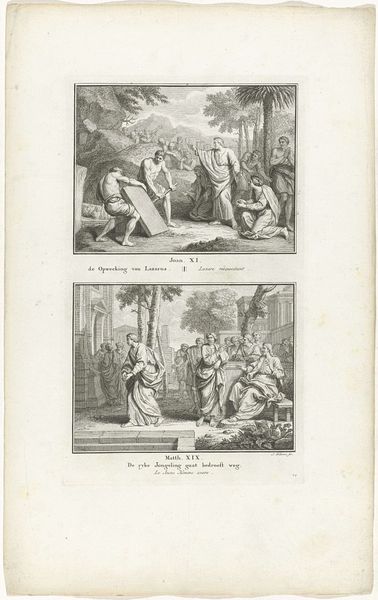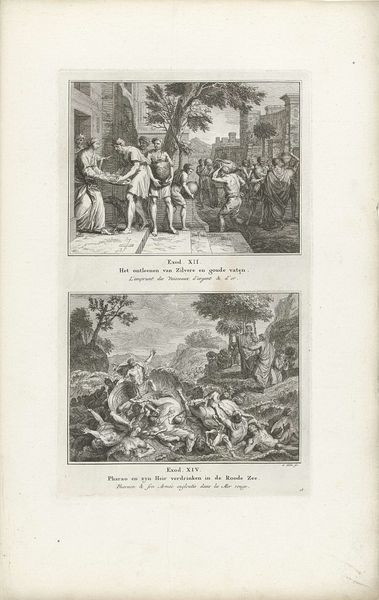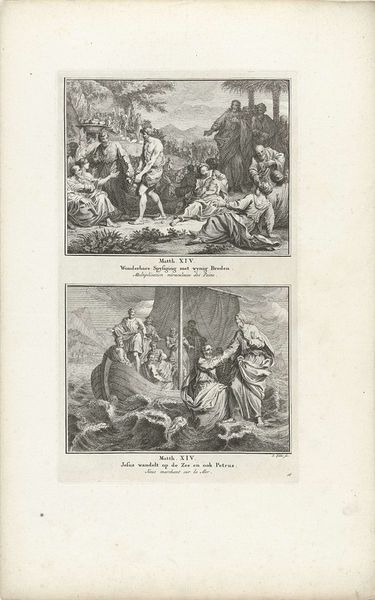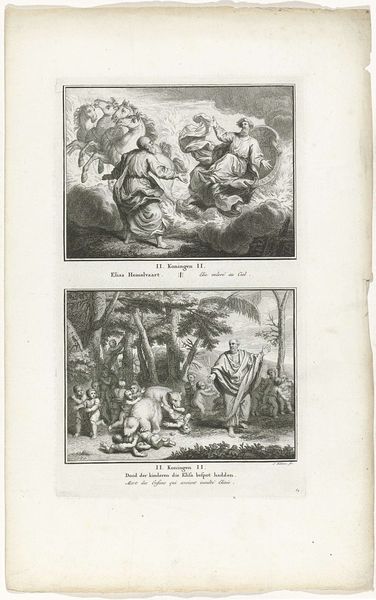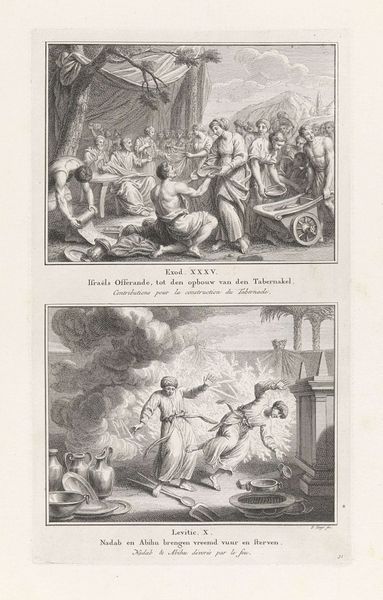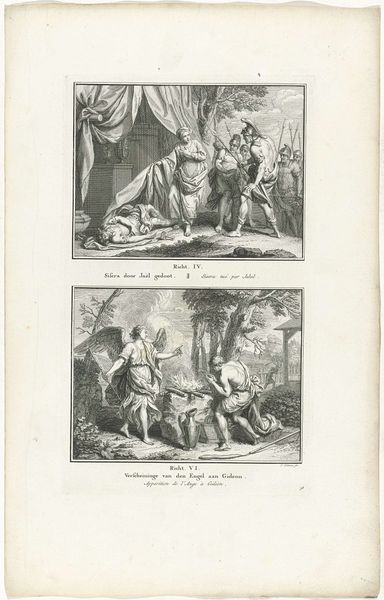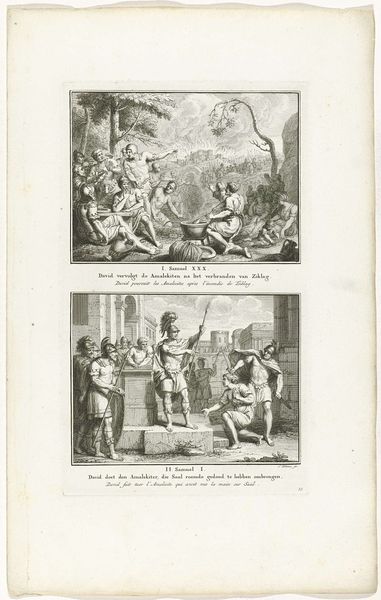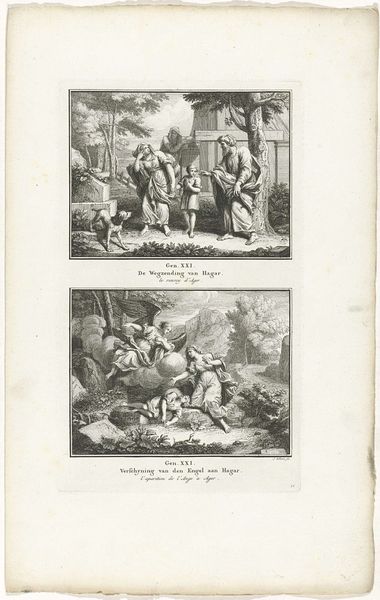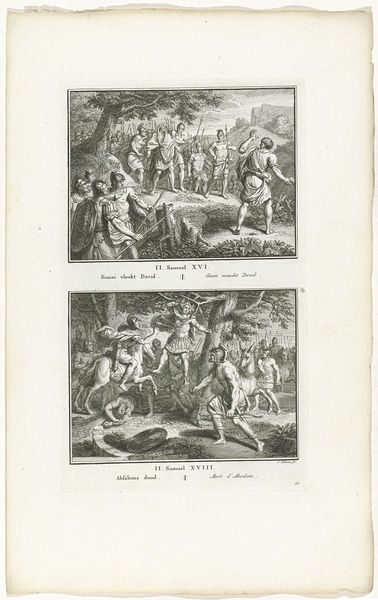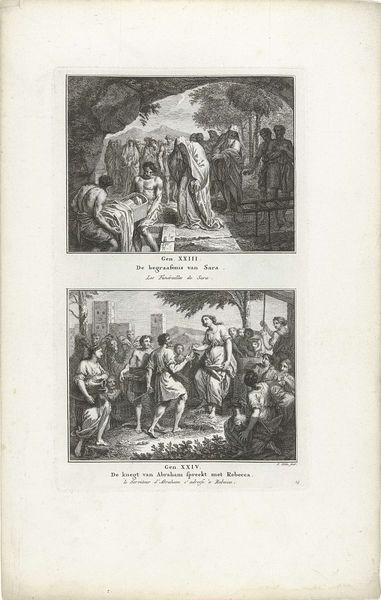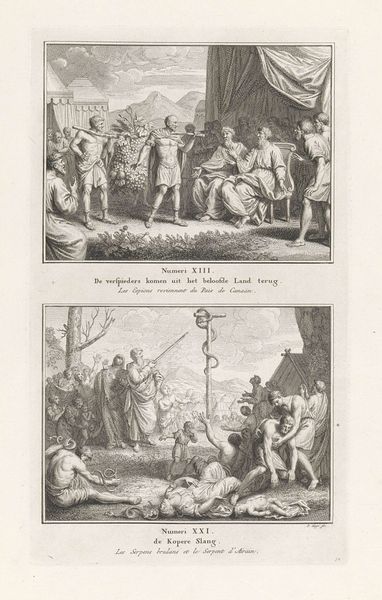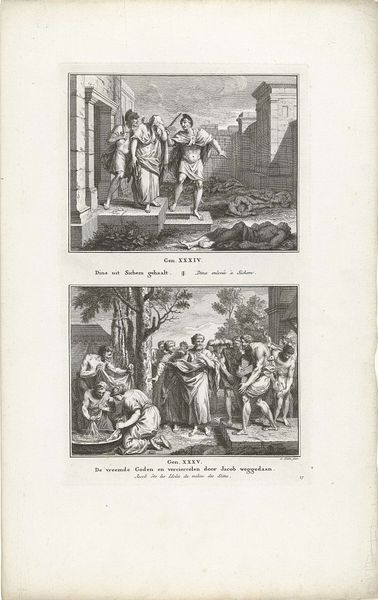
Slapende Christus op een schip tijdens de storm en Christus staat duivels toe in wilde zwijnen te varen 1791
0:00
0:00
simonfokke
Rijksmuseum
#
pencil drawn
#
aged paper
#
light pencil work
#
light coloured
#
old engraving style
#
personal sketchbook
#
ink colored
#
sketchbook drawing
#
pencil work
#
sketchbook art
Dimensions: height 323 mm, width 189 mm
Copyright: Rijks Museum: Open Domain
Editor: This print, "Slapende Christus op een schip tijdens de storm en Christus staat duivels toe in wilde zwijnen te varen," created in 1791 by Simon Fokke, has a real old-world feel. It looks like ink on paper, and depicts two scenes – a tempestuous sea voyage and a figure casting demons out of a person. It's a little chaotic, which is pretty understandable considering the subject matter. What draws your eye, as a historian? Curator: Well, the pairing of these two biblical scenes immediately makes me think about power, particularly the power of religious narratives within 18th-century European society. Fokke isn't just illustrating scripture; he's participating in a visual culture deeply intertwined with theological and political debates. Editor: So, the placement of these two stories next to each other is significant? Curator: Absolutely. Think about the political context. The late 18th century was a period of significant upheaval – the Enlightenment was challenging traditional religious authority, and revolutions were brewing. Representing Christ's dominion over both natural elements and demonic forces visually reinforces established power structures, suggesting a divinely ordained order. Consider also the medium - prints were relatively accessible. Who was Fokke trying to reach? Editor: It seems like this imagery would offer a reassurance during times of uncertainty, promoting existing power dynamics, reaching wide audiences? Curator: Precisely. Furthermore, how do you view the artist’s style shaping public understanding? The deliberate choices shape audience interpretation, either aligning them with, or subtly challenging, the dominant sociopolitical climate. What do you make of the somewhat dramatic rendering of both scenes? Editor: It definitely leans into the drama. Looking at the social and political forces really shows the layers within even seemingly straightforward religious art. I learned a lot about prints during this time! Curator: And I'm reminded of how easily religious art gets intertwined in complex narratives about social stability and authority. A great dive into the political implications of religious narrative of the time.
Comments
No comments
Be the first to comment and join the conversation on the ultimate creative platform.
